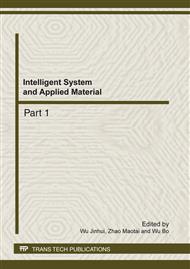p.500
p.504
p.508
p.513
p.518
p.523
p.528
p.535
p.541
Research for Dynamic Characteristics of Electro-Hydraulic Proportional Relief Valve Based on AMESim
Abstract:
The electro-hydraulic proportional relief valve which will be used widely, has better stability and pollution resistance compared with the traditional nozzle flapper and the electro-hydraulic proportional reversing valve in the hoist constant deceleration braking system. The model of the G-π bridge electro-hydraulic proportional relief valve is built in this paper based on the simulation software-AMESim and the characteristic curves of the port pressure are plotted according to different step signals. The influence that the oil elastic modulus exerts to the dynamic characteristics of the valve is also studied in this paper, which provides data supports for the rational design of the valve structure and the hydraulic oil with certain elastic modulus. As the core component of the hoist constant deceleration, the electro-hydraulic proportional relief valve provides the theory basis for the next research of the constant deceleration.
Info:
Periodical:
Pages:
518-522
Citation:
Online since:
February 2012
Authors:
Price:
Сopyright:
© 2012 Trans Tech Publications Ltd. All Rights Reserved
Share:
Citation:


